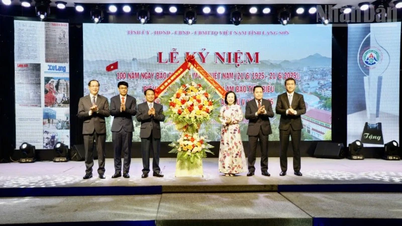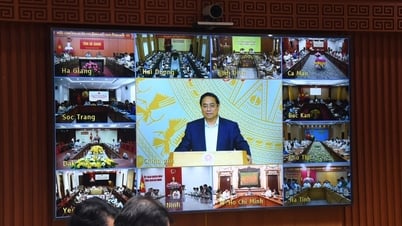
As the digital transformation continues to accelerate, publishers face a dual challenge: traditional revenue streams – particularly from advertising and print circulation – are declining, while pressure for growth from digital revenue and alternative revenue streams is growing.
However, these alternative revenue streams are still a long way from the revenue that print newspapers used to generate. As previous reports have shown, digital growth at most publishers has not been enough to offset the steady decline in advertising and print circulation, which used to be the main sources of revenue.

1. Print is only a small part of total revenue
Although print newspapers still account for a large proportion of total revenue for some newsrooms, especially in countries such as Japan and India, globally, revenue from advertising and print newspaper distribution in 2024 will account for only 44.6% of total revenue for surveyed units.
This is the first time since the survey began that the share of print revenue has fallen below 50% of total revenue. In 2023, it will be 57.5%. In 2022-23, it will be 53.5%. This 12.5 percentage point drop in just one year shows the urgency of reducing dependence on print.

A prime example is Mediahuis – one of Europe’s leading newspaper groups. Today, around 70% of its revenue comes from print, while 30% comes from digital – despite its 1.8 million subscribers being split evenly between the two platforms. Its goal is to “reverse the split from 70/30 to 30/70 within seven years. If we achieve this by 2030, we can position ourselves as a sustainable newspaper company on digital platforms,” CEO Gert Ysebaert said at the WAN-IFRA World Newspaper Congress 2024 in Copenhagen.

2. Digital revenue growth
In contrast to the decline in print, digital revenue grew 7% year-on-year. In total, digital advertising and subscription revenue now account for 31.6% of total revenue – thanks to paywalls, paid apps and specialized services.

Reuters and CNN both implemented paywalls in the past year. Notably, Reuters – which has provided free content since 1995 – has more than 45 million monthly visitors from 240 countries/territories.
El País (Spain) launches a digital edition in the US targeting more than 60 million Spanish speakers – following editions in Mexico, Colombia, Chile and Argentina.
The Economist launches Economist Podcasts+ podcast subscription – a combination of podcast access, free articles, and a newsletter. The full package includes all subscriber-only content and events.

The New York Times is making its entire podcast library a paid service for $6 a month or $50 a year. “We’re turning a strong audio connection into a driver of subscription growth,” a NYT representative said.
In the US, the Atlanta Journal-Constitution launched a campaign for just $1.99/week for a lifetime digital subscription – as long as readers don't cancel.
Still, cautionary lessons remain, as readers who bought a $99 lifetime subscription to Rolling Stone are now left with only a PDF — no longer a print edition, to the disappointment of many.

3. Other income streams are increasingly important
Revenue from “other” sources increased by 5% compared to last year – now accounting for nearly 24% of total revenue, including: e-commerce, event organization, content licensing…
Of these, event organization is the largest revenue generating channel. BusinessDay (Nigeria) is an example: it organizes dozens of events each year, contributing 32% of revenue and 40% of profit.
Other revenue sources also remained stable: sponsorship (16%), platform partnerships (12%), and business services (14%).

Membership is growing strongly: in 2023 only 5% chose it as an important source of revenue, increasing to 13% in 2024. In Argentina, Cenital gets more than half of its revenue from its “Best Friends” group. In South Africa, Daily Maverick ’s Maverick Insider program accounts for 40% of revenue.
28% of publishers surveyed said they have implemented a membership or donation model.
Additionally, donations are also becoming more popular thanks to the growth of the non-profit model and campaigns like The Guardian 's .


4. Micropayment: Is the idea back?
Micropayments have failed many times, but are being revisited. For example, The Washington Post is testing a 7-day subscription for $4–$10 — based on user behavior.
Experts suggest: consider micropayments as a step in the journey to subscription , rather than a replacement for traditional subscriptions.
Products like the Financial Times’ FT Edit – which offers eight articles a day for $4.99 a month – are a gateway for brands to build content consumption habits, before users upgrade to a $39 or $75 a month subscription plan.

In a rapidly changing digital media landscape, news publishers are faced with the challenge of balancing reaching a broad audience with generating sustainable revenue. The WAN-IFRA report “Success Stories with Reader Revenue Models” highlights the importance of finding a business model that plays to each organization’s strengths.
In recent years, reader monetization, especially subscriptions, has emerged as a key strategy post-Covid-19. However, publishers also need to be flexible to ensure a balance between reader revenue and advertising revenue. And the answer lies in the Freemium model .

Why is the Freemium model suitable?
After the height of the hard-paywall subscription era, many news organizations have realized that simply putting a paywall on previously free content doesn’t work. It cuts into ad revenue without attracting enough new subscribers. At the same time, a subscription-only model requires an upfront spend on premium content, which takes time to pay off, and many publishers can’t afford it during the current advertising slowdown.
The freemium model, which combines free content and premium content that requires a subscription, addresses these challenges. It is considered the optimal approach to balancing advertising and subscription revenue for several compelling reasons.

1. Balancing Reach and Revenue
The freemium approach cleverly combines the need for broad access to content with the need to generate sustainable revenue. Providing a significant portion of content for free allows publishers to attract high traffic, which is essential for advertising revenue. At the same time, premium content acts as a clear value proposition, encouraging dedicated readers to subscribe for exclusive or in-depth material. This strategy serves both casual and serious readers, optimizing revenue from both advertising and subscriptions.
2. Diversify income sources
In an era marked by volatility in digital advertising revenue and algorithmic changes, the freemium model offers a diversified revenue strategy. By leveraging both advertising and subscriptions, publishers can mitigate the risks associated with volatility in the digital advertising market. Subscription revenue from premium content provides a stable, predictable revenue stream, which is important as ad blocking becomes more prevalent and competition for digital ad spend intensifies.
3. Improve user experience and engagement
The freemium model significantly improves user experience and engagement, which is crucial to building loyalty in the digital age. Providing free access to a piece of content attracts a wider audience and fosters regular reading habits, potentially leading to higher subscription conversion rates. This approach also maintains publisher visibility on search engines and social media, key channels for discovery and traffic acquisition.
4. Adapt to consumer expectations and behavior
The freemium model offers a “try before you buy” experience that aligns with modern consumer expectations and demonstrates the quality of the publication to encourage subscription purchases. Its flexibility allows publishers to dynamically adjust the level of free and premium content, ensuring effectiveness over time based on data-driven insights into user behavior and preferences.
5. Support content monetization strategy
The freemium model enables a strategic, data-driven approach to content monetization. Publishers can identify content that drives engagement and subscriptions, and adjust their strategy to either highlight high-demand content behind a paywall or offer certain topics for free, ad-supported access. This flexibility enables ongoing optimization and refinement of both content creation and monetization strategies.
Compare with other paywall models
- Hard Paywall: All content is locked behind a paywall. Users must register to access it. Often used by specialized or high-value content providers.
- Soft Paywall (Metered Paywall): Users can access a certain number of articles for free for a certain period of time. After reaching this limit, they must subscribe. Common with news aggregator websites.
- Freemium Paywall: A combination of free and premium content. Basic articles are free, while in-depth, exclusive, or premium content requires a subscription. Common among both news sites and niche content sites.
- Dynamic Paywall: A paywall that adjusts in real time based on user behavior, engagement, and other metrics to personalize when the paywall is activated. Used by publishers looking to maximize subscriptions by targeting users based on their likelihood to subscribe.
- Hybrid Paywall: Combines multiple paywall models, tailored to publisher strategy and audience behavior.
- Time-Based Paywall: Access to content based on time. For example, content may be free to access immediately upon publication but locked behind a paywall after a certain period of time. Useful for breaking news or content that depreciates over time.

The study found that the freemium model has been the most widely adopted globally over the past few years, while hybrid models are gaining popularity. Despite the differences, brands adopting different strategies have achieved similar subscriber growth, however, WAN-IFRA experts note that the freemium model is easier for audiences to understand because the proposition is clear: some content is free, others are paid. In contrast, collecting actionable data from a metered paywall is more complicated.
News Agencies That Succeeded With the Freemium Model
Several tabloids, historically reluctant to charge readers, have recently adopted a freemium model, representing a significant shift in strategy.
- Daily Mail (UK): Earlier this year, the Daily Mail shifted its strategy to a “freemium” model, specifically targeting UK readers to boost revenue. Some of MailOnline’s articles (around 10-15 a day) are behind a paywall for readers in that key market. However, the vast majority of content (nearly 1,500 stories a day) remains free. The move marks a significant shift, as the platform has previously been adamant about not charging readers. Danny Groom, editor/publisher of MailOnline, stressed that they are starting from a “strong position” with a “huge, engaged, loyal direct audience.” He sees this as an opportunity to deepen relationships with those people.
- Blick (Switzerland): Swiss German-language newspaper Blick launched its freemium paywall last June, 12 years after it first envisioned charging for online content. In its first eight months, Blick+ attracted more than 16,000 subscribers, nearly 80% of whom had previously signed up through the free subscription wall. The subscription wall strategy started by limiting just one article per day to a small group of users (2% of the total audience) to see how they responded. Over time, the approach was expanded, eventually extending to 10-12 articles per day for Blick’s entire audience (around 1.2 million people). The articles selected for this restriction were carefully chosen because they were deemed valuable enough that people would consider paying for a subscription. The current Blick+ model limits around 10% of the site’s content (around 200 articles per month) to subscribers. Adrian Gottwald, head of reader revenue at Blick Group, explained that they chose this approach because they wanted to give subscribers access to a wide range of content without significantly cutting into the site’s advertising revenue. Subscribers also get additional benefits such as newsroom tours and event discounts. Blick+ has been cited, along with Bild in Germany, as a guiding model for Mail Online’s new freemium paywall approach. Gottwald shared that they waited until the site became more popular (it now has over 1.2 million visitors per day) and the content improved before introducing a paid subscription option.
- Bild (Germany): German tabloid Bild is also one of the models that inspired the Daily Mail. Bildplus, which launched in June 2013, reached 700,000 digital subscribers by the end of 2023 and now has 707,208. This makes it the largest subscriber base in the German-language news market and one of the most popular paywalled news sites in the world. About 12 to 15% of the brand's total online content is paywalled, and the goal is for around 30% of articles at the top of the homepage to be subscriber-only. Daniel Mussinghoff, head of Bildplus's senior division, believes that Bild still has "huge potential" and has not yet reached its growth limit.
In summary , the WAN-IFRA report suggests that the ideal audience monetization model should contribute around 40% of revenue for a sustainable media business, leaving room for advertising revenue as the second most important business model, alongside the others. Freemium is highlighted as an approach that maximizes value from readers while maintaining healthy advertising growth.


- Events: This is a powerful strategy to not only attract readers but also generate significant revenue. Launched in 2022, Semafor generated an impressive 30% of its first-year revenue from events, branded SemaforX. Much of this success was due to their focus on experiential events and leveraging the founding team’s experience in organizing events — they organized nearly 12 events before the newsroom officially launched. In 2023, the unit also successfully tested the expansion of the Semafor Media brand into the live events sector, with plans to organize 40 events globally.
- Membership Models: To overcome “subscription fatigue” and cater to the diverse interests of readers, news organizations are exploring membership models to foster deeper connections. Tortoise Media (UK) has over 100,000 members and hosts “ThinkIn” events to promote discussion and co-creation of content. Gazeta Wyborcza (Poland) has a “Wyborrcza.pl Club” that offers exclusive access for readers to interact with the editorial team and meet online, creating a sense of community.

- Brand Licensing and Direct-to-Consumer Strategy: News organizations are leveraging their brand recognition to develop D2C initiatives, including branded events and consumer products. First-party data analytics help identify licensing opportunities, develop appropriate product lines, and form strategic partnerships. Forbes has seen a 40% increase in consumer revenue thanks in part to a strategic focus on merchandise.
- Create online courses: The rise of online learning platforms has opened up new avenues for news organizations to share their expertise through interactive courses. The Financial Times launched a free “MBA 101” newsletter course, converting potential subscribers through a discounted student subscription offer.
- Philanthropy: Some news organizations are transitioning to nonprofits to accept tax-deductible donations while still pursuing traditional revenue streams. The Salt Lake Tribune was the first long-running newspaper in the United States to go nonprofit.
- Branded Content: Media outlets are increasingly taking on the role of brand storytellers, leveraging their content creation expertise to develop engaging and impactful advertising campaigns for brands. This model offers a valuable diversification strategy to complement traditional revenue streams. Branded content studios like The New York Times’ T Brand and Vox’s Vox Creative are prime examples.

- Ecommerce and Affiliate Marketing: Publishers are adapting their content strategies to include product reviews, shopping guides, and curated content geared toward specific ecommerce interests. Prioritizing seamless user experiences and mobile-optimized platforms is critical. The New York Times’ Wirecutter, Gannett’s Reviewed, and The Wall Street Journal’s Buy Side are examples of publishers that offer product reviews and recommendations. Maintaining editorial integrity and ensuring transparency in affiliate marketing are key challenges.
- Leveraging archives: Legacy news organizations have priceless historical treasures in their archives. These collections are being strategically leveraged to generate revenue, enhance subscriber incentives, and drive deeper reader engagement. The Atlantic digitized its entire print magazine archive. Harvard Business Review uses case studies as an exclusive benefit for premium subscribers. TIME used AI to turn its massive archive into engaging puzzles.
- Consulting/Research: Some news organizations are leveraging their in-house expertise and data to provide consulting and research services. FT Strategies by the Financial Times, The Economist Intelligence Unit (EIU) and Skift Research are examples.

E-MAGAZINE
Compiled and presented by: TRUNG HUNG
Photo: WAN-IFRA
Nhandan.vn
Source: https://nhandan.vn/special/chuyen-doi-so-thuc-day-da-dang-hoa-nguon-thu-cua-bao-chi/index.html




































![[Video] Exhibition celebrating 100 years of Vietnamese Revolutionary Journalism](https://vphoto.vietnam.vn/thumb/402x226/vietnam/resource/IMAGE/2025/6/18/1ba7ffdc6eef4b1682a3768741aca732)




































































Comment (0)